







































































Lake Atitlán, Guatemala
Agent: Cliff Jacobs - Managing Principal Estate Agent & CEO (Nat.Dpl.Hotel Man (UJ). M.P.R.E.)
Agent Cellphone: +27 (0) 84 413 1071 / +27 (0) 61 716 6951
Agent Office Number: +27 (0) 84 413 1071
Agent Email Address: cliff@exquisitehotelconsultants.com
Type: Lodge with Cabins
Bedrooms: 12
Bathrooms: 2
Showers: 8
Parking: 0
Yield: Not Disclosed
About Us
Lake Atitlán (Lago de Atitlán) is a large endorheic lake (one that does not flow to the sea) in the Guatemalan Highlands. While Atitlán is recognized to be the deepest lake in Central America, its bottom has not been completely sounded. Estimates of its maximum depth range up to 340 meters. The lake is shaped by deep escarpments which surround it and by three volcanoes on its southern flank.
Lake Atitlán’s further characterized by towns and villages of the Maya people. The lake is volcanic in origin, filling an enormous caldera formed in an eruption 84,000 years ago. It is renowned as one of the most beautiful lakes in the world, and Aldous Huxley famously wrote of it:
"Lake Como, it seems to me, touches on the limit of permissibly picturesque, but Atitlán is Como with additional embellishments of several immense volcanoes. It really is too much of a good thing."
The lake basin supports extensive coffee growth and a variety of farm crops, most notably corn. Other significant agricultural products include onions, beans, squash, tomatoes, cucumbers, garlic, chile verde, strawberries, avocados and pitaya fruit. The lake itself is rich in animal life which provides a significant food source for the largely indigenous population.
Here at our Lodge, we have clean, fresh lake water, which is great to swim in. We have a beach and a private dock to swim from.
Nearby towns and villages


Lake Atitlán is surrounded by several villages. There is no road that circles the lake. Villages are reached by boat or roads from the mountains.
Panajachel
A large mainland town where you first enter the lake area.The gateway to Lake Atitlan, the place to shop till you drop.
Santa Cruz
A small village with a few restaurants and an excellent medical clinic.
Jaibalito
An interesting place where you can find Hans, who makes the best German food, bread, and coffee at the lake.
Tzununá
The location of Maya Moon Lodge itself, is a quiet village of mostly Mayan people. Excellent for hiking. Tzununa is also home to Atitlan Organics which offers weekly tours on Monday mornings, starting at 10 am.
San Marcos
The “in” spot for Yoga, holistic courses, treatments and massage. Take a look at our Holistic Treatments and Massage page for detailed information. San Marcos is a five-minute boat ride from our Lodge's private dock, ( the boats stop every 20 minutes), or a 20 minute walk from the top road entrance.
San Lucas
A nice place to visit a number of agriculture initiatives and fairtrade coffee farms.
San Juan
A beautiful town with friendly locals and many co-op/fairtrade organizations. The paintings and textiles here are really something to see.
San Pedro
The town to go to when you want to party! There are several pubs and restaurants to enjoy a night on the town. Get a private boat, Tuctuc, or taxi back from San Pedro to Maya Moon Lodge if you feel like a party night out.
Santiago
The home of Maximón, an idol formed by the fusion of traditional Mayan deities, Catholic saints and conquistador legends. The brunch at Posada de Santiago is excellent and in itself worth the trip.
San Antonio Polopo
A laid-back and simple Mayan village that is famous for its distinctive ceramics.
Lake Atitlán
Lake Atitlán (Spanish: Lago de Atitlán, [atiˈtlan]) is a lake in the Guatemalan Highlands of the Sierra Madre mountain range. It is in the Sololá Department of southwestern Guatemala. It is the deepest lake in Central America.
Name
Atitlán means "between the waters". In the Nahuatl language, "atl" is the word for water, and "titlan" means between. The "tl" at the end of the word "atl" is dropped and the words are combined to form "Atitlán".
Geography
Lake Atitlán is a lake in Guatemala with a maximum depth of about 340 metres (1,120 ft) with an average depth of 220 metres (720 ft). Its surface area is 130.1 km2 (50.2 sq mi). It is approximately 18 km × 8 km (11.2 mi × 5.0 mi) with around 20 km3 (4.8 cu mi) of water. Atitlán is technically an endorheic lake, feeding into two nearby rivers rather than draining into the ocean. It is shaped by deep surrounding escarpments and three volcanoes on its southern flank. The lake basin is volcanic in origin, filling an enormous caldera formed by an eruption 84,000 years ago. The culture of the towns and villages surrounding Lake Atitlán is influenced by the Maya people. The lake is about 50 kilometres (31 mi) west-northwest of Antigua. It should not be confused with the smaller Lake Amatitlán.
Lake Atitlán is renowned as one of the most beautiful lakes in the world, and is one of Guatemala's most important national and international tourist attraction. German explorer and naturalist Alexander von Humboldt called it "the most beautiful lake in the world," and Aldous Huxley famously wrote of it in his 1934 travel book Beyond the Mexique Bay: "Lake Como, it seems to me, touches on the limit of permissibly picturesque, but Atitlán is Como with additional embellishments of several immense volcanoes. It really is too much of a good thing."
The area around San Marcos has particularly tall cliffs abutting the lake and in recent years has become renowned for cliff diving.
The area supports extensive coffee and avocado orchards and a variety of farm crops, most notably corn and onions. Significant agricultural crops include corn, onions, beans, squash, tomatoes, cucumbers, garlic, chile verde, strawberries and pitahaya fruit. The lake itself is a significant food source for the largely indigenous population.
Geological history
The first volcanic activity in the region occurred about 11 million years ago, and since then the region has seen four separate episodes of volcanic growth and caldera collapse, the most recent of which began about 1.8 million years ago and culminated in the formation of the present caldera. The lake now fills a large part of the caldera, reaching depths of up to 340 m (1,120 ft).
The caldera-forming eruption is known as Los Chocoyos eruption and ejected up to 300 km3 (72 cu mi) of tephra. The enormous eruption dispersed ash over an area of some 6,000,000 square kilometres (2,300,000 sq mi): it has been detected from Florida to Ecuador, and can be used as a stratigraphic marker in both the Pacific and Atlantic oceans (known as Y-8 ash in marine deposits). A chocoyo is a type of bird that is often found nesting in the relatively soft ash layer.
Since the end of Los Chocoyos, continuing volcanic activity has built three volcanoes in the caldera. Volcán Atitlán lies on the southern rim of the caldera, while Volcán San Pedro and Volcán Tolimán lie within the caldera. San Pedro is the oldest of the three and seems to have stopped erupting about 40,000 years ago. Tolimán began growing after San Pedro stopped erupting and probably remains active, although it has not erupted in historic times. Atitlán has developed almost entirely in the last 10,000 years and remains active, its most recent eruption having occurred in 1853.
On February 4, 1976, a very large earthquake (magnitude 7.5) struck Guatemala, killing more than 26,000 people. The earthquake fractured the lake bed and caused subsurface drainage from the lake, allowing the water level to drop two metres (6 ft 7 in) within one month.
In 1955, the area around Lake Atitlán became a national park. The lake was mostly unknown to the rest of the world, and Guatemala was seeking ways to increase tourism and boost the local economy. It was suggested by Pan American World Airways that stocking the lake with a fish prized by anglers would be a way to do just that. As a result, an exotic non-native species, the black bass, was introduced into the lake in 1958. The bass quickly took to its new home and caused a radical change in the species composition of the lake. The predatory bass caused the elimination of more than two-thirds of the native fish species in the lake and contributed to the extinction of the Atitlan grebe, a rare bird that lived only in the vicinity of Lake Atitlán.
A unique aspect of the climate is what is referred to as Xocomil (of the Kaqchickel language meaning "the wind that carried away sin"). This wind is common late morning and afternoon across the lake; it is said to be the encounter of warm winds from the Pacific meeting colder winds from the North.
In August 2015 a thick bloom of algae known as Microcystis cyanobacteria re-appeared in Lake Atitlan; the first major occurrence was in 2009. Bureaucratic red tape has been blamed for the lack of action to save the lake. If current activities continue unchecked, the toxification of the lake will make it unsuitable for human use.
Culture
The lake is surrounded by many villages in which Maya culture is still prevalent and traditional dress is worn. The Maya people of Atitlán are predominantly Tz'utujil and Kaqchikel. During the Spanish conquest of the Americas, the Kaqchikel initially allied themselves with the invaders to defeat their historic enemies, the Tz'utujil and K'iche' Maya, but were themselves conquered and subdued when they refused to pay tribute to the Spanish.
Santiago Atitlán is the largest of the lakeside communities, and it is noted for its worship of Maximón, an idol formed by the fusion of traditional Mayan deities, Catholic saints, and conquistador legends. The institutionalized effigy of Maximón is under the control of a local religious brotherhood and resides in various houses of its membership during the course of a year, being most ceremonially moved in a grand procession during Semana Santa. Several towns in Guatemala have similar cults, most notably the cult of San Simón in Zunil.
While Maya culture is predominant in most lakeside communities, Panajachel has been overwhelmed over the years by Guatemalan and foreign tourists. It attracted many hippies in the 1960s, and although the civil war caused many foreigners to leave, the end of hostilities in 1996 saw visitor numbers boom again, and the town's economy is almost entirely reliant on tourism today.
Several Mayan archeological sites have been found at the lake. Sambaj, located approximately 55 feet below the current lake level, appears to be from at least the pre-classic period. There are remains of multiple groups of buildings, including one particular group of large buildings that are believed to have been the city center.
A second site, Chiutinamit, where the remains of a city were found, was discovered by local fishermen who "noticed what appeared to be a city underwater". During subsequent investigations, pottery shards were recovered from the site by divers, which enabled the dating of the site to the late pre-classic period (300 B.C. – 300 A.D.), more specifically 250 AD.
A project titled "Underwater archeology in the Lake Atitlán. Sambaj 2003 Guatemala" was recently approved by the Government of Guatemala in cooperation with Fundación Albenga and the Lake Museum in Atitlán. Because of the concerns of a private organization as is the Lake Museum in Atitlán the need to start the exploration of the inland waters in Guatemala was analyzed.
There is no road that circles the lake. Communities are reached by boat or roads from the mountains that may have brief extensions along the shore. Jaibalito can only be reached by boat. Santa Catarina Palopó and San Antonio Palopó are linked by road to Panajachel. Main places otherwise are Santa Clara La Laguna, San Juan La Laguna, and San Pedro La Laguna in the west; Santiago Atitlán in the south; Cerro de Oro in the southeast; and San Lucas Tolimán in the east.
Recent studies indicate that a ceremonial site named Samabaj was located on an island about 500 metres (1,600 ft) long in Lake Atitlán. The site was revered for its striking connection to the Popol Wuj of the K'iche' Mayan peoples.
Guatemala
Guatemala (/ˌɡwɑːtəˈmɑːlə/ (![]() listen) GWAH-tə-MAH-lə; Spanish: [ɡwateˈmala] (
listen) GWAH-tə-MAH-lə; Spanish: [ɡwateˈmala] (![]() listen)), officially the Republic of Guatemala (Spanish: República de Guatemala), is a country in Central America bordered by Mexico to the north and west, Belize and the Caribbean to the northeast, Honduras to the east, El Salvador to the southeast and the Pacific Ocean to the south. With an estimated population of around 17.2 million, it is the most populous country in Central America and is the 11th most populous country in the Americas. Guatemala is a representative democracy; its capital and largest city is Nueva Guatemala de la Asunción, also known as Guatemala City, the largest city in Central America.
listen)), officially the Republic of Guatemala (Spanish: República de Guatemala), is a country in Central America bordered by Mexico to the north and west, Belize and the Caribbean to the northeast, Honduras to the east, El Salvador to the southeast and the Pacific Ocean to the south. With an estimated population of around 17.2 million, it is the most populous country in Central America and is the 11th most populous country in the Americas. Guatemala is a representative democracy; its capital and largest city is Nueva Guatemala de la Asunción, also known as Guatemala City, the largest city in Central America.
The core of the Maya civilization, which extended across Mesoamerica, was historically based in the territory of modern Guatemala. In the 16th century, most of this area was conquered by the Spanish and claimed as part of the viceroyalty of New Spain. Guatemala attained independence in 1821 as part of the Federal Republic of Central America, which dissolved by 1841.
From the mid-to late 19th century, Guatemala suffered chronic instability and civil strife. Beginning in the early 20th century, it was ruled by a series of dictators backed by the United Fruit Company and the United States government. In 1944, the authoritarian leader Jorge Ubico was overthrown by a pro-democratic military coup, initiating a decade-long revolution that led to sweeping social and economic reforms. A U.S.-backed military coup in 1954 ended the revolution and installed a dictatorship.
From 1960 to 1996, Guatemala endured a bloody civil war fought between the US-backed government and leftist rebels, including genocidal massacres of the Maya population perpetrated by the military. Since a United Nations–negotiated peace accord, Guatemala has achieved both economic growth and successful democratic elections, although it continues to struggle with high rates of poverty and crime, drug cartels, and instability. As of 2014, Guatemala ranks 31st of 33 Latin American and Caribbean countries in terms of the Human Development Index.
Guatemala's abundance of biologically significant and unique ecosystems includes many endemic species and contributes to Mesoamerica's designation as a biodiversity hotspot.
Description By The Owner
Turn-Key Operation. 50 metres of Lake Atitlan frontage by 80 metres, with private dock and beach. The lodge sleeps 27 Centre, Midrange lodge on Lake Atitlan.
Beautiful tropical gardens with many fruit trees including avocado, mango, banana and lemon trees, raised organic vegetable beds. Stunning sun and moonrises. Spectacular views of six volcanoes.
The lodge is easily accessed by road or the lake. 20-minute walk to San Marcos (Holistic Village) In Tzununa village the permaculture centre of the Lake.
Five private houses/cabanas and one large two-level wooden house ideal for groups, families or individuals.
Perfect for swimming, kayaking, paddle boarding, tubing.
Tzununa is an up and coming area of the lake.
The lodge is a great place for guests on holiday or for a retreat or wellness centre The local boats stop here, very easy to visit nearby villages.
Road access from the Panama highway is three to four hours from Guatemala City. Tzununa is a peaceful village.
The lodge employs 5 local people from one family who live in Tzununa, the lodge also runs with a few work exchangers for reception and other duties.
The lodge generates a good income and is a very successful business. It is advertised on social media, Tripadvisor, Airbnb, and most of the bookings are made through our website
Guest Facilities On-Site
Attractions For Guests In The Local Area
Accommodation
Casa Sueña Lakeside Private Cottage
The Casa Sueña is a beautiful adobe and stone cottage that sits directly ashore of the placid Lake Atitlán. The cottage is completely surrounded by tropical flowers, and its gardens are frequented by hummingbirds, geckos and the like.
The top floor boasts a huge, comfortable queen-sized bed as well as a spacious balcony with a table, chairs and hammock. It also has a television with a Netflix and YouTube on it, it has its own router, we can adjust the WiFi so the router is only used in Casa Suena at an extra cost of $80 a month. (WiFi is 10MB download, 3 Mb upload for the lodge). Ideal for online workers.
The bottom floor has a single bed, and a comfy chair includes a complete kitchen and a generously sized, rustic stonework bathroom.
Please request a viewing if you are in the area.
Colibrí Lakeside Cabaña
The Colibri private cabaña is perfect for an individual or couple.
With a spacious foyer or optional bedroom and kitchen area and a private room with a balcony, this room is great for online workers.
A private bathroom, shower and three beds make this one of our most flexible spaces. Queen bed in the front room, two single beds in the large kitchen or optional bedroom.
Mariposa Cabaña
The Mariposa private cabaña is perfect for an individual or a couple, The suite includes a queen-sized bed, a private bathroom and hot gas shower, veranda, balcony, outside patio with garden area, hammock and comfortable furnishings. It also has a fully fitted kitchen with a small fridge, gas stovetop, blender, toaster, coffee machine and essential for cooking.
Blue Heron Cabaña
The Blue Heron private suite is built around a large tree, giving it a unique and luxurious treehouse feel and plenty of privacy. The suite includes a queen-sized bed, a private bathroom and shower, veranda, balcony, hammock and comfortable furnishings. We have now added a fully fitted kitchen with a small fridge, gas top stove, blender, toaster and essentials.
Perfect for an individual or couple who would like to work online, 10MB download, 5MB upload.
Gecko Rooms-6 Bed Shared Room-Balcony-Hammocks-Views
The Gecko Rooms are two large rooms, on two levels, they are directly on the lake, with amazing views, spectacular sunrises and views of the lake and volcanoes.
The Gecko Rooms feature 6 beds on the lower level.
We are always flexible and happy to meet your personal requirements!
Bar & Restaurant
We offer a wide variety of home-cooked meals from chicken and meat dishes through vegetarian and specialty fare. Many of our leafy greens, vegetables and spices come from our own in-house organic gardens. Three meals are served each day, plus snacks, drinks and baked goods anytime.
Come enjoy a hearty meal, fresh baked goods or a delicious fresh juice or smoothy with a stunning lakefront view that spans five volcanoes. You can get to our bar & restaurant from any colectivo boat in the Atitlán area.
Activities on Lake Atitlán
Stand-Up Paddle Boarding, Kayaking, Tubing, Yoga, Nature Reserve Tours, Swimming, Bird Watching, Atitlan organics, Maximón Visits, Zip-lining, Mountain & Volcano Hikes, Spanish Lessons, Explore Mayan Villages, Shaman Ceremonies, Day of the Dead, Kite Festivals, Scuba Diving….
There’s something for everyone!
Lake Activities
Save the items below and more to review at your leisure.
Kayaking
This is a fun way to see the Lake. We have several companies that rent kayaks by the hour or day.
Our Lodge has 8 tubes which are fun to chill on the lake.
The Lodge has one play kayak for clients' use.
Stand-Up Paddle Boarding
We have one Stand-Up Paddle Board for guests use, we charge 100 Q an hour. We also arrange tours with Stand-Up Paddle Boarding which is just 5 min boat ride away in San Marcos
Venga Atitlan is offering daily Stand Up Paddle and Rock Climbing classes in San Marcos La Laguna.
Scuba Diving
Several Mayan archaeological sites have been found under and around the lake, such as Sambaj and Chiutinamit. You can take lessons or even take the PADI Altitude Specialty Diving Course.
Swimming
The best place to swim is off the private dock of our Lodge. You have a fantastic view, the water is clean, and we have all sorts of floating items, including one kayak and our latest fun addition: Ten tubes which are perfect for chilling on the lake, they have special beer holders for those lazy days. Latest Addition Stand-Up Paddle Boarding.
Spanish Lessons
The Lodge can arrange for private Spanish lessons by the day or hour for a very modest fee. Rebeca from San Marcos (see photo below) charges 60q an hour, she is highly qualified and teaches beginners to advanced students, she will come to the lodge, your choice where you wish to study; relax in the bar/lounge/room and learn by the lakeshore.
Hiking
There are countless trails to explore around the lake, the mountains, and the volcanoes. Tolimán, the highest volcano rises 3,158 meters tall.
Indian Nose can be seen from the towns of San Marcos and San Pedro and climbed from San Juan.
Nature Reserve & Bird watching
A tranquil, 400-acre reserve boasts a variety of tropical plants and animals, including monkeys, the raccoon-like coatis, and exotic birds. On other bird watching tours around the Lake you can find the white-bellied emerald hummingbird, the little hermit hummingbird, Golden-fronted woodpeckers, singing quails, among many other species.
Zip-Lining
Now we’re talking Adventure! A total of eight zip lines ranging from 90 meters (295 ft.) to 320 meters (1050 ft.), which travel along waterfalls, canyons, a valley, and a coffee grove forest. Hop on the Ziptrek and Cables X-Tremos for a fun way to spend an afternoon.
Holistic Treatments and Massage
Our Lodge is just a five-minute boat ride from our private dock or a twenty-minute walk to the village of San Marcos La Laguna. Here you will find small shops, fruit stands, several restaurants, and numerous holistic treatments.
Massage, Tarot and Yoga: private & group sessions
Hallie is our onsite masseur – Her speciality is Swedish Massage – Sending energy to the heart; she incorporates crystal auric massage, energy release and chakra balancing, resulting in a unique, relaxing, energy revitalising massage, we highly recommend her.
Hallie also offers Tarot readings
Hallie has extensive knowledge of the tarot.
Our Lodge has a yoga teacher Hannah – who teaches yoga on our private dock
Massage and Reiki session
Nearby masseurs and therapists; There are many different masseurs and holistic therapists in San Marcos, be discerning in your choices, here are a few we highly recommend:
The Holistic Cottage
This is run by Katherine Bird in San Marcos, is a great place to get a massage, receive therapy, and take holistic treatment courses.
Katherine is a long-term therapist in San Marcos and is committed to the ideals that inspired the creation of the Holistic Center. The founding principle was that nobody should ever hear that there is “nothing more that we can do” when it comes to your health. There are always alternative therapies that can help when you get sick, and more importantly, prevent you from becoming ill. Katherine dedicates her time to helping and teaching people how to relax, and re-balance their body, mind, and spirit. She specializes in Full Body Massage, Indian Head Massage, Creative Energy Work, Reiki, Kinesiology, and teaching courses in holistic therapies. Teaching is an integral part of her work as she believes in empowering each individual to take charge of their own lives, and specifically, their health.















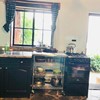
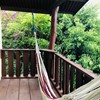



























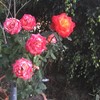







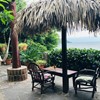









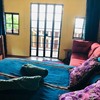


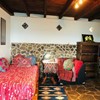


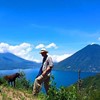
Cliff Jacobs (Nat Dpl Hotel Man (UJ). MPRE. GA Level 5 TEFL) Managing Principal / CEO Exquisite Hotel Consultants (Pty) Ltd Mobile: +27 (0) 84 413 1071 / +27 (0) 61 716 6951 Email: cliff@exquisitehotelconsultants.com Web: https://www.exquisitehotelconsultants.com © All rights reserved Terms and Conditions apply Scroll down to view our Hospitality Properties and Businesses for sale or lease or lease-to-buy or partnership arrangement or management agreement arrangement.